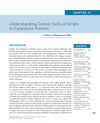Lgr6+ Stem Cells and Their Progeny in Mouse Epidermis Under Regimens of Exogenous Skin Carcinogenesis, and Their Absence in Ensuing Skin Tumors
November 2016
in “
Oncotarget
”
TLDR UV exposure reduces Lgr6+ stem cells in mouse skin and they don't significantly contribute to skin cancer development.
The study investigated the role of Lgr6+ stem cells in mouse epidermis during UV and chemical carcinogenesis. Researchers found that while Lgr6+ stem cells and their progeny were active in the interfollicular epidermis (IFE) and hair follicles under carcinogenic conditions, they were notably absent in the resulting skin tumors. This suggested that Lgr6+ stem cells did not contribute to tumor formation, highlighting the importance of quiescent stem cells in skin carcinogenesis. Detailed molecular analyses, including methylation-specific melting curve analysis and quantitative real-time PCR, supported these findings.




